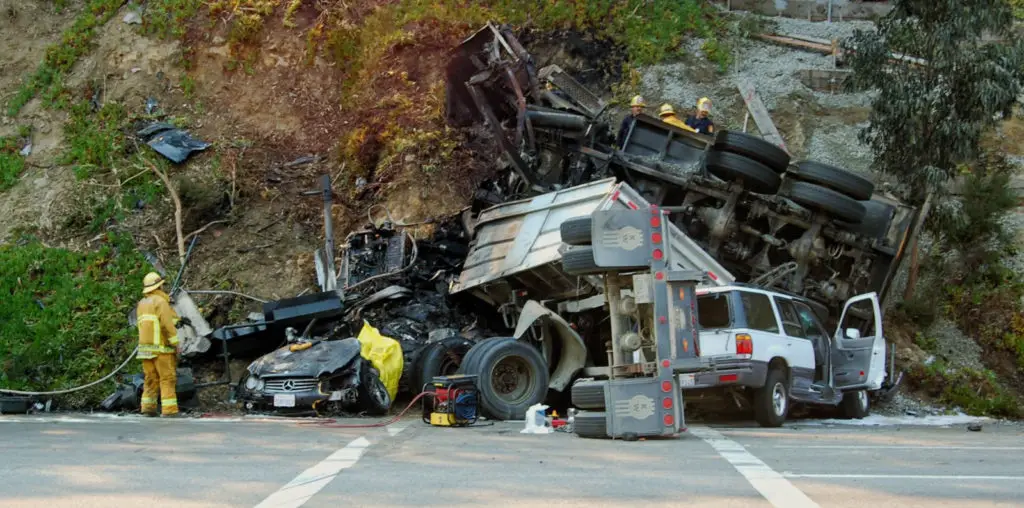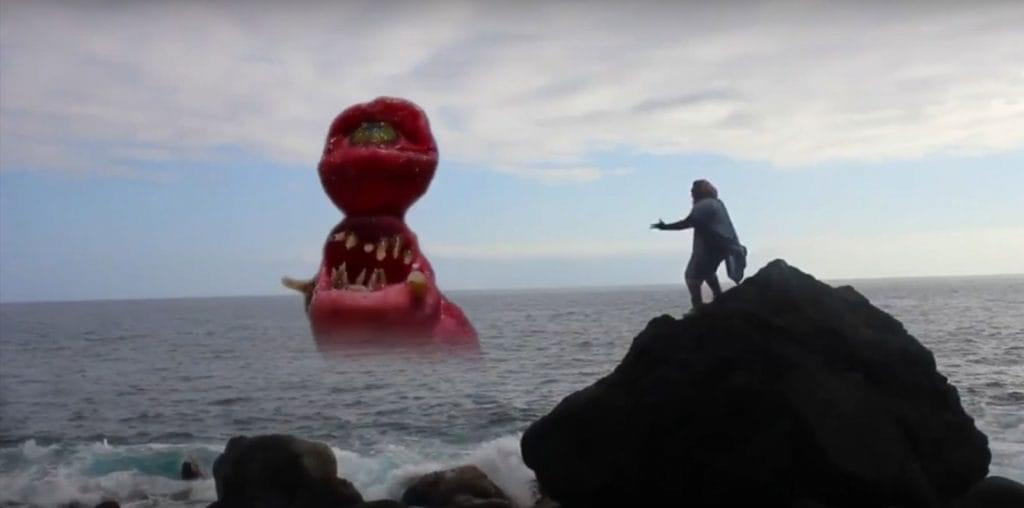Culpeper, Virginia, is a rather unique community about 70 miles southwest of Washington, DC. Chock full of American history (General George Armstrong Custer had his horse shot out from under him during the Civil War), a vast collection of architectural styles, cool dark night skies amid rolling hills, and home to the likes of Scarlett O’Hara, Benny Goodman, Tommy Dorsey, and many other film and television stars. The latter are all ensconced at the Library of Congress National Audio Visual Conservation Center, a large American archive of film, digital media, and recorded sound, all housed in a former Federal Reserve bunker now expanded into a 420,000 square foot facility that serves as a preservation laboratory, underground storage vault, and cataloging center, as well as a lovely 200-seat theatre with regular programs showcasing it collections, with the screenings, for the most part, open to the public. The locals love it. Why not?
For the last three years the theatre has welcomed a group of archivists, scholars, and buffs (about 80 this year, maybe 50 last year) to a free program that helps to pinpoint any tags to help further identify unknown silent films in its collections. In its second year it formalized the program under the title “Mostly Lost,” and included films from other sources, as well as those housed in Culpeper. This year’s event showcases snippets of celluloid from the Library of Congress, EYE Film Institute (Netherlands Filmmuseum), the Museum of Modern Art, the UCLA Film & Television Archive, George Eastman House, Lobster Films, and the Royal Belgian Archive.
Ranging in length from a few seconds to 20 minutes, these are works that have had their decades-old origins misplaced within the modern-day cataloging realm. Main credits are missing, reels have been lost, deterioration has made some hard to view. These films, which date from the 1890s to the 1930s, do have some identification marks: intertitles might list a star, sets might have a studio logo (silent films did this a lot, especially Pathe Frérès [a rooster] or Biograph [“AB”], or other small hints.
These clips from our cinematic past have been christened with new titles, such as “[Unidentified Coleman No. 1: Crucifixion of Christ]”, a LoC film via The American Film Institute (which abruptly shut down its preservation department years ago under financial burdens). This 450-foot clip was described in the program as “Interesting short film on the Crucifixion. Hard to tell what country.” While viewing the film, I was sitting next to Kim Tomadjoglou, the former head of the AFI Preservation program, and she was fairly certain this was “Christus,” an early Italian silent. She shouted this information out to the audience, particular the official note-takers Rachel Parker and Steve Massa.
One down, maybe 100 others to go.
Wait a minute, did I say “shout?” In a movie theatre? Yes. Unlike the conventional screenings here, the audience is encouraged to talk amongst themselves to help solve the riddle of a film’s past. Isn’t that Gladys Hulette? This is a Vitagraph version of “The Merchant of Venice.” That looks like James Young Deer. etc. etc.
We also took out our laptops and smart phones to surf the web for additional clues and help triangulate on a possible title using information culled from the shout-outs.
Last year we identified about half of the 80 films presented. The final tally isn’t in for this year’s event, but, at best I think we’d be happy with a 25% score. We started out well, on Thursday night, with figuring out a James Kirkwood-starring short was the 1911 film “A Brass Button,” but some sessions are quiet, while others (including one reel with three different western star Tom Mix films in which all were nailed down).
The evening programs are slightly different because they showcase known films and the locals are allowed in. You have to pre-register for the 3-day event, but there is no charges. There are abundant local motels a 5-minute drive from the campus. The night screening on Thursday was comprised of shorts from 1909 (Pathe Frérès’ “La Fiancée Recalcitrante/A Will of Her Own”) to the two-reeler “The Adventures of Bill and Bob: Trapping a Bobcat,” a precursor to today’s reality animal series, this one starring twin brothers Bill and Bob Bradbury, the latter who would be re-christened Bob Steele by Film Booking Offices of America (FBO) when they fashioned him into an exceedingly popular Western star.
The first evening screening on June 6 started with “Robin Hood Jr.” a 28-minute children’s variation of the popular story, this one a 1923 entry starring Frankie Lee and Peggy Cartwright as the titular hero and his Maid Marian. The print came from Richard Sheckman, an avid film collector who unearths those amusing film clips on the “Late Show with David Letterman” and contributes program notes (and films) the the Cinevest gathering of 100s of devoted fans of silent films and early talkies, held in the Syracuse suburb of Liverpool every March. I call that extended weekend, “Old Films for Old Farts,” although there are a good many students who attend.
Returning my thoughts to Culpeper, the second film presented on Friday night was actually presented in digital HD, a first for the auditorium, which piped in the digital image from 3 floors above. This was “The Family Secret,” a lovely 65-minute feature starring child star Baby Peggy. The image was incredibly good, considering the film, an on-going restoration project between the Library, film historian David Stenn, Fondazione Cineteca Italiana (Milan), and the UCLA Film & Television Archive, was hobbled together from a 35mm print with Italian intertitles, and an American play-at-home 16mm print. This project was described by Rob Stone, the LoC Moving Image Curator who has organized the event (with a VERY capable assist by film technician Rachel Parker and the rest of the curatorial staff).
For attendees with arrived early on Thursday, they could join a three-hour tour of the building followed by “Film I.D. 101 Class” lead by George Eastman House preservation officer Anthony L’Abbate, LoC Nitrate Valut Manager George Willeman, and New York Public Library librarian and film programmer Steve Massa. The latter wasn’t the only “Mostly Lost” first. There were two post-lunch lectures on Friday and Saturday. One was “Undercranking: The Magic Behind the Slapstick,” delivered by Ben Model, one of the the weekend’s three accompanists (silent films aren’t meant to be shown without audio enhancement). The others who tickled the ivories were Andrew Simpson and Philip Carli. Ben’s presentation covered the use of hand cranked cameras in the silent film era (whereas today’s sound films are presented at a 24-frames-per-second rate). Back in the old days, when shooting a film and projecting it were done at variable speeds, many comedians were able to create gags and play with “time” so that, when ultimately viewed by an audience, gave the appearance of nearly supernatural stuntwork and timing. Saturday’s talk by MoMA’s Ron Magliozzi centered on an unfinished, early 1910s Biograph film by noted black entertainer Bert Williams. The film, featuring an all-African-American cast, may have been abandoned, but we were able to watch 50+ minutes of raw footage taken off the original camera negative.
The closing event was a screening at Culpeper’s newly (and lovingly) restored State Theatre, a 75-year-old auditorium that welcomed cineastes and locals to laugh at two Buster Keaton films (1921’s “The Playhouse” and 1924’s “Sherlock, Jr.”) as well as film historian Eric Grayson’s restoration of Chapter 5 of “King of the Kongo,” a rare 2-reeler (and reflectively hilarious for its rudimentary ineptitude as being an episode from the first sound serial) starring Jacqueline Logan (with some support from Boris Karloff). Sending the crowd helplessly rolling into the aisles was the last film of the weekend was “Pass the Gravy,” one of the great comedy shorts of all times. Max Davidson stars as a neighbor in a particularly troublesome spot with his neighbor over a grand champion rooster.
Anyone with an interest in American silent film history should consider traveling to Culpeper, Virginia for this enlightening program. More comments about the weekend can be found at the Facebook group “Friends of Mostly Lost.”




Nolan–I’ve been a fan of silent movies for decades. Mostly Lost (on tap again this year in Culpeper) is a growing phenom for fans and archivists. We had about 150 attendees last year. Another has been the Syracuse Cinefest in March, which, sadly for long time attendees like myself, just announced its next celebration of silent and early sound films will be its last. I was lucky enough to work for the American Film Institute in the 1970s and 1980s, including 8 years researching movies (all silent, of course) released in the U.S. through 1910. It’s great that more people are discovering how powerful and beautiful these films can be.
An entire three days where I can spend a couple hours watching Silents movies!? Count me in! I am the only person my age that I know of that avidly watches silent movies, so it would be great to meet up with other fans.
Great article. I would love to go Culpeper and see these films. The silent film era was incredible.